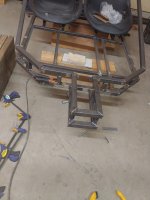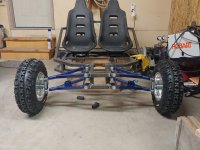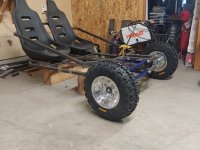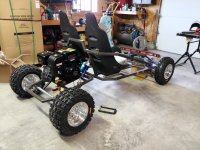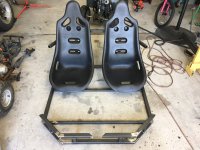What spindles did you go with? Did you get them from BMI Karts? I looked through the plans and found nothing for dimensions. I see they offer a few different options. Got the PN of what you used by any chance?
I went with the standard 3/4" spindles. They are on BMI karts but can also be found on amazon, which is where I got mine, but it is no longer listed now. I ended up with the 3/4" by 4.5" spindles, much like this:

www.bmikarts.com
The 4.5" ended up being slightly too short though for the hubs if using the nylon spacer/bearing the spindles come with. I'm making it work by just using a machine bushing to rest the inner bearing against. Either way, it might be worth considering the 6" length to be more flexible.... I really only needed another 1/2" to make it work, so 6 might be too long, I dunno. I've already gotten pretty wide with the spacer adapters for my wheels, so I don't mind bringing the hub in a little closer.
I got the hubs from bmi karts - the with the 3/4" sealed taper bearings, which aren't really "sealed bearings" as you'd traditionally think of. They are standard taper bearings that need to be packed and maintained, they just have a rubber boot/seals on the outside of the bearing intended to keep dirt out of the hub. I'm not sure if I'm a fan yet or not.
I ended up going with 3/4" because, well why not I thought - go as heavy duty as possible; however, there does seem to be more hub options for 5/8" spindles. I went with 21" tires up front, and may end up going to 23 or 24 eventually, so I wanted the heavier duty spindle.
